LLM vs NLP: Which One is Right for Your Use Case?

TL;DR
NLP vs LLM is about different methods used to process human language.
Choose LLMs for handling complex, multi-task projects that require deep language understanding and generation.
Opt for NLP when your project involves a specific, rule-based task and requires a more efficient, lightweight solution.
Use LLMs for large-scale applications, especially if multi-lingual support and task generalization are needed.
NLP is ideal for cost-effective, task-specific performance, such as text classification, sentiment analysis, or search.
Consider your budget and infrastructure before selecting LLMs, as they require significant resources and computational power.
Breaking Down the Basics of NLP vs LLM
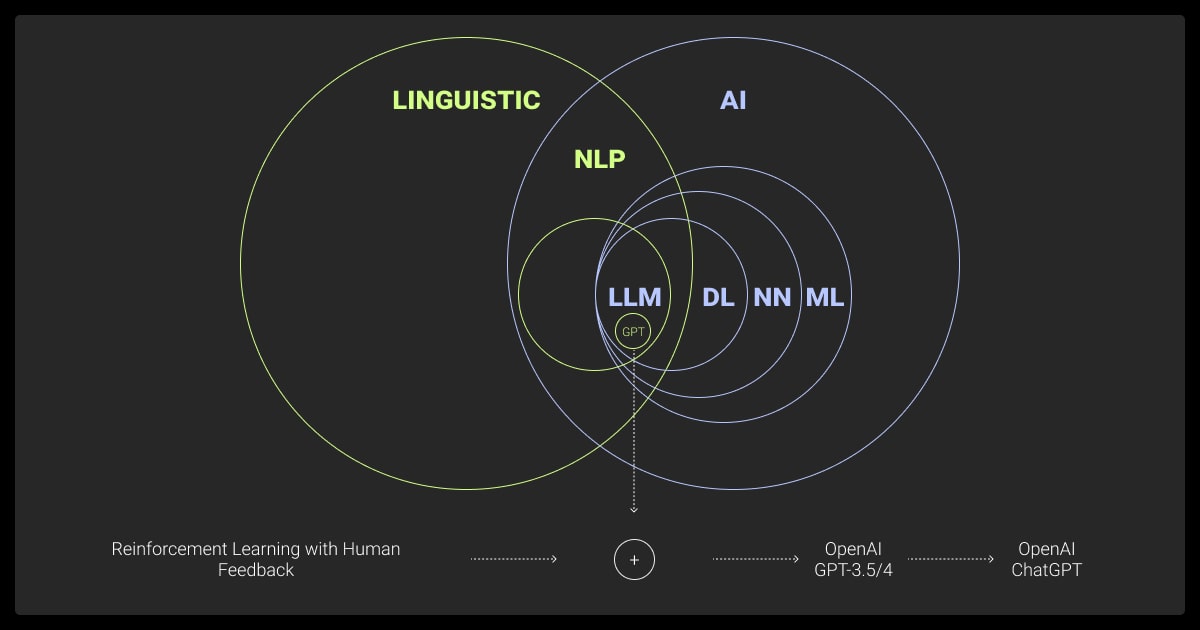
AI is transforming how we work with language. Two main approaches are leading this shift: Large Language Models (LLMs) and traditional Natural Language Processing (NLP). Both have their benefits, but they work in different ways.
What are LLMs?
Large Language Models (LLMs) are AI systems designed for various language tasks.
Different types of LLMs are trained on large amounts of text data using deep learning methods. LLMs, like GPT-4, can create human-like text, summarize content, and engage in conversations. Their main strength is handling different tasks without needing specific tuning for each one.
However, LLMs require significant computational power and large datasets. They are ideal for companies with diverse language needs and the resources to support their infrastructure.
What is NLP?
Natural Language Processing (NLP) involves a range of techniques used to analyze, understand, and generate human language.
Traditional NLP models are often smaller and more task-specific than LLMs. They excel at handling particular tasks like text classification, sentiment analysis, or named entity recognition.
NLP models rely on algorithms like decision trees, support vector machines, or smaller neural networks. They require less computational power than LLMs, making them a good choice for businesses with more focused language needs or limited resources.
Core Differences Between LLM vs NLP
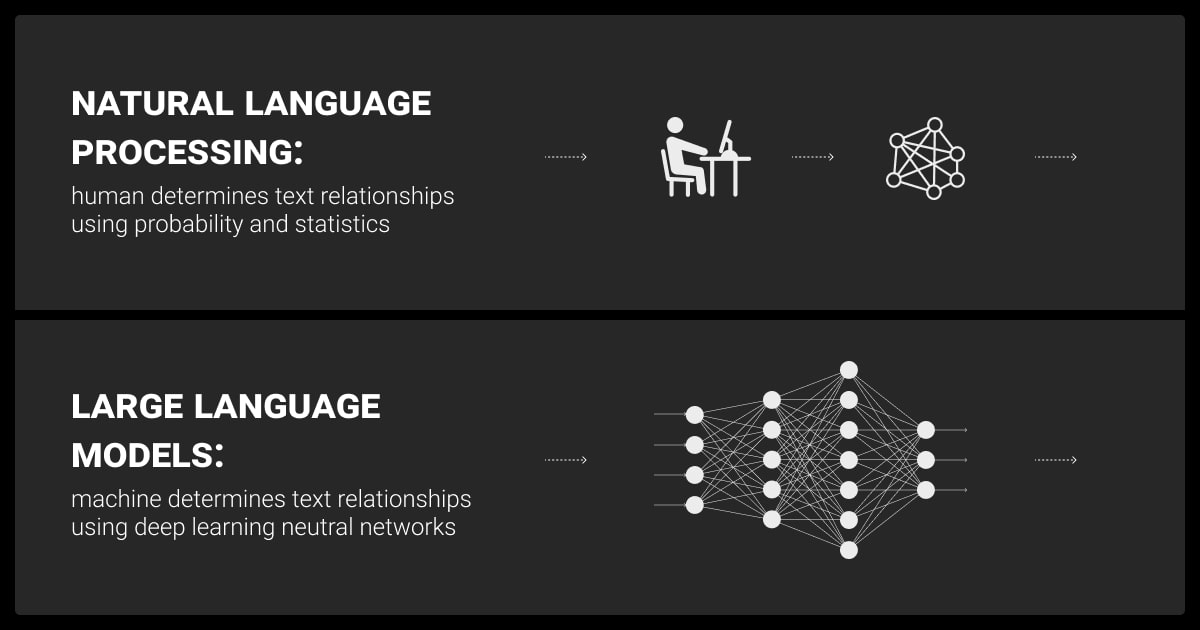
LLMs and NLP serve different needs, but how do you decide which fits your project best? Let’s dive into the essential differences between NLP vs LLM in terms of architecture, scalability, and resource demands.
Architecture and Scalability
LLM architecture is built on deep neural networks and can process massive amounts of data. This allows them to handle multiple tasks and adapt across various domains. NLP models, however, are usually designed for specific tasks. They often rely on simpler architectures like decision trees or rule-based systems.
LLMs can scale effectively, but they require a lot of computing power. NLP models, on the other hand, are more lightweight and easier to deploy, especially for smaller tasks.
Training Requirements
Language models need vast datasets for pre-training and LLM fine-tuning. This makes them suitable for general applications but expensive to train and maintain. Traditional NLP models, however, often rely on smaller datasets and are quicker to train, especially when they are task-specific.
“LLMs excel in tasks requiring nuanced understanding and context, such as chatbots or content generation, while traditional NLP models are more efficient for simpler tasks like keyword extraction or rule-based classifications.”
Co-Founder, Software House
Generalization vs. Specialization
LLMs excel in generalization, meaning they can perform many tasks without being specialized. When comparing NLP models vs LLM models, the former are usually more specialized, meaning they work well for narrow, defined tasks. This makes NLP a better choice for businesses with specific, well-understood language needs.
Resource Consumption
Large language models demand heavy computational resources, requiring powerful GPUs and extensive memory. In contrast, NLP models consume far fewer resources, making them a more practical option for teams with limited budgets or computational power.
Criteria | Large Language Models (LLMs) | Traditional NLP Models |
Flexibility | Can handle multiple tasks across domains | Specialized for specific tasks |
Training Data | Requires vast amounts of data | Requires smaller, domain-specific data |
Adaptability | Easily adapts to new tasks with fine-tuning | Requires task-specific models and rules |
Response Time | Slower due to heavy computation | Faster, lightweight performance |
Language Support | Multilingual with no extra training | Requires separate models or training per language |
Use Cases for Large Language Models (LLMs)
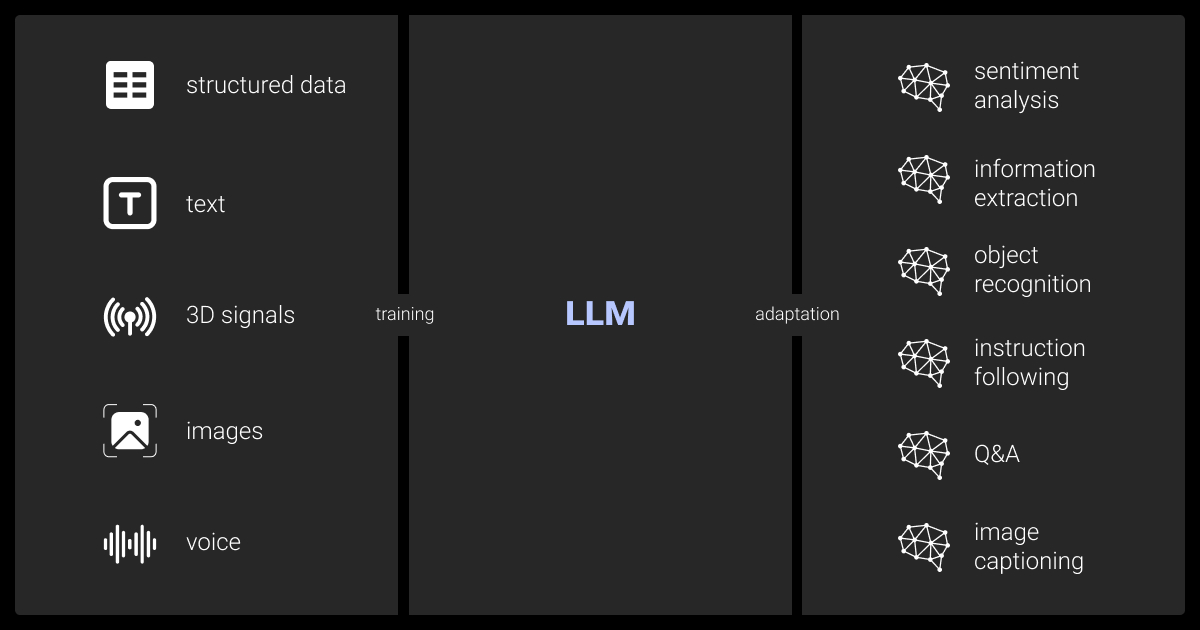
LLMs are powerful tools, but where do they truly shine? From content generation to multi-lingual automation, here’s how LLMs can elevate your AI projects.
Content Generation and Summarization
LLMs excel at generating large amounts of coherent, high-quality content. They are widely used for writing blog posts, reports, and even creative writing. Summarization tasks, such as condensing long articles or research papers, are another area where LLMs outperform traditional methods.
Conversational AI and Chatbots
These models drive advanced conversational LLM agents, such as virtual assistants and customer service bots. Their skill in understanding and generating natural language responses makes them perfect for building chatbots that can manage complex conversations with little supervision.
“LLMs are resource-intensive, but their potential to enhance user interactions and redefine chatbot technology is immense. For businesses aiming to improve customer engagement, LLMs can take automated communication to the next level.”
Senior VP of Marketing & Sales, Deep Sentinel
Complex Text Analysis
LLMs can process and analyze complex text, making them perfect for industries like legal, healthcare, or finance. These models can sift through long, technical documents and extract key insights without requiring a specific training set for each domain.
Automation in Multilingual Contexts
Thanks to their training on diverse datasets, LLMs can understand and generate text in multiple languages. This makes them an excellent choice for applications where multi-lingual support is essential, such as global customer support or content creation for international audiences.
Optimize your LLM with expert fine-tuning services!
Whether you're working with complex language data, need multilingual support, or require deep insights into specialized fields, we fine-tune your LLM to adapt it to your requirements.
Use Cases for Traditional NLP
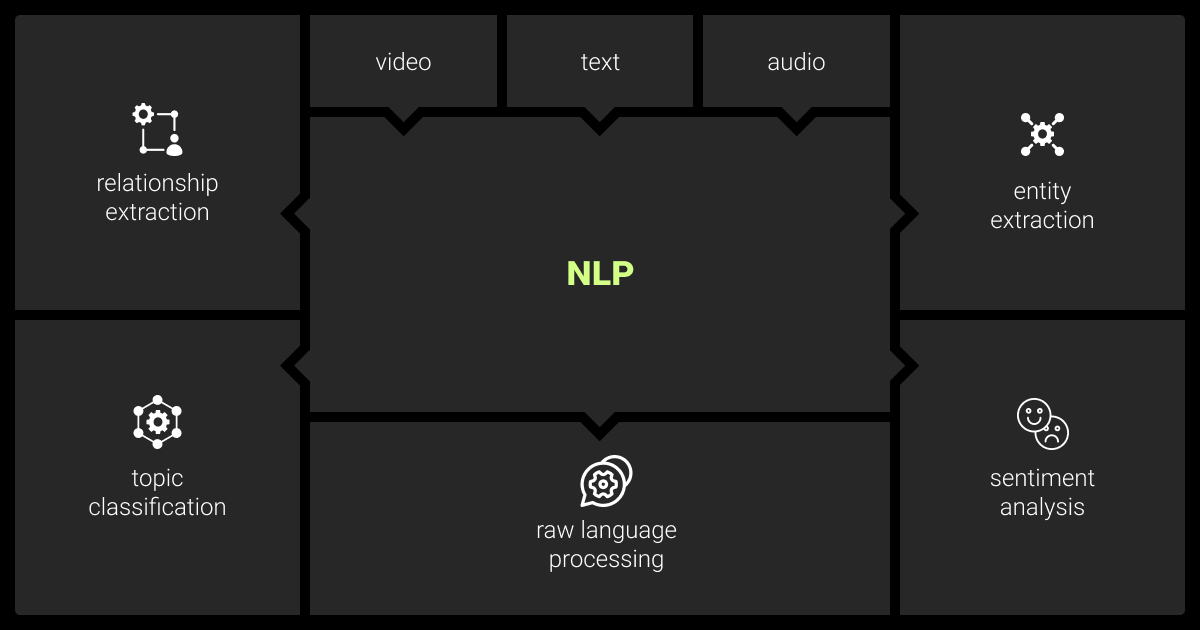
When discussing traditional NLP vs LLM, the former is perfect for specialized, rule-based tasks. Let’s explore where NLP excels, from text classification to domain-specific applications.
Rule-Based and Domain-Specific Tasks
Traditional NLP models are perfect for tasks where specific rules or patterns are needed. For example, email filtering, spam detection, and keyword extraction are areas where NLP’s precision excels. If your task involves structured text or well-defined patterns, NLP is a cost-effective solution.
Text Classification, Entity Recognition, and Search
NLP is often used for tasks like text classification, such as sentiment analysis or organizing documents. Named entity recognition (NER) helps find important terms like names, places, or organizations in text. NLP models are also highly effective for search engine algorithms, where precision and relevance matter most.
Lightweight Applications
If you're working with limited computational power, NLP is ideal. These models are lightweight and can run efficiently on standard hardware or even mobile devices. This makes NLP suitable for companies or projects with smaller budgets or resource constraints.
Customization for Niche Domains
NLP models can be tailored to specific industries or tasks. They work well in highly specialized fields like medical terminology processing, legal document analysis, or customer support, where industry-specific language needs to be understood.
Get expert labeling for your NLP models!
Enhance your NLP models with our precise, security-compliant data annotation services. Train your models on the best data for optimal performance.
LLM vs NLP: Which One to Choose Your Use Case?
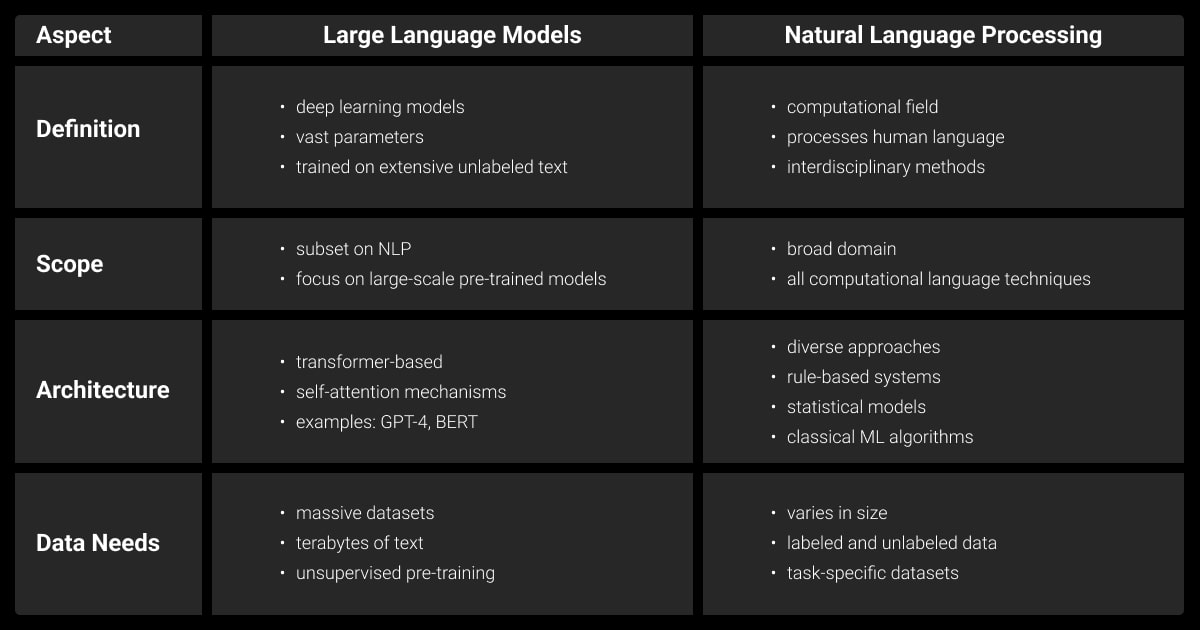
The right choice between LLM vs NLP models depends on your project’s complexity, scalability needs, and resources.
Scalability Needs
If your project requires handling multiple, varied tasks at scale, LLMs are the way to go. Their flexibility to handle various tasks without needing much retraining makes them ideal for large-scale use. However, if your task is specific and won’t expand into new areas, traditional NLP may be a more practical and cost-efficient option.
Budget and Resource Constraints
LLMs need a lot of computing power, which can result in higher costs. If your team has limited infrastructure or budget, traditional NLP models will deliver solid performance at a lower cost. They use fewer resources and are easier to manage.
Task Complexity
For complex tasks like understanding nuanced, context-heavy text or generating creative content, LLMs shine. They can work with many languages and adjust to different cases. On the other hand, if your tasks are straightforward, like classifying documents or extracting key entities, NLP will likely meet your needs without the added expense of LLMs.
“For tasks like sentiment analysis or named entity recognition, LLMs may offer superior accuracy due to their pre-training on large datasets. However, traditional models trained on relevant data could prove more performant for specialized domains.”
Senior Web Developer & Founder, Mango Innovation
Customization Requirements
When you need deep customization for a specific domain, NLP models may be the better choice. They can be finely tuned to niche fields, providing more accurate results in specialized areas. LLMs, while powerful, may not always match the level of precision required for highly specialized tasks without extensive fine-tuning.
Use Case | Recommended Approach | Reasoning |
Multilingual Content Generation | LLMs | Handles multiple languages without retraining |
Email Spam Filtering | NLP | Well-defined, rule-based task |
Customer Service Chatbots | LLMs | Can handle complex and open-ended conversations |
Text Classification for Legal Docs | NLP | Domain-specific accuracy is required |
Summarizing Long Research Papers | LLMs | Processes and condenses large volumes of text |
Challenges and Considerations of NLP vs LLM
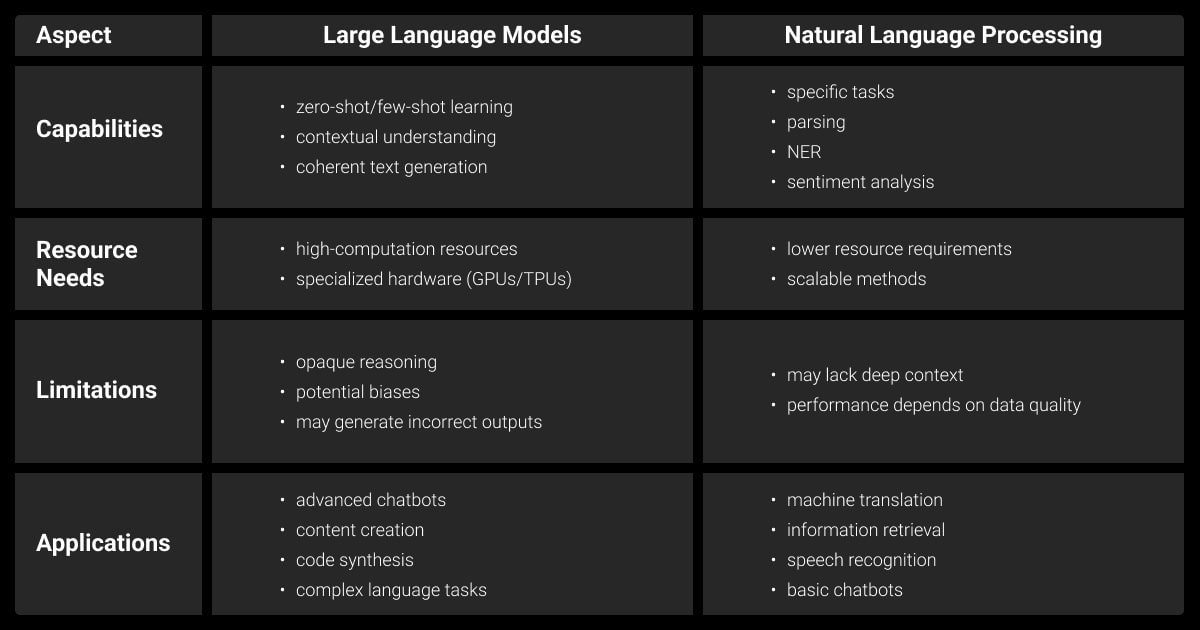
Understanding the NLP vs LLM difference is essential when choosing the right approach for language processing tasks. Each method has its own set of challenges and considerations:
Ethical and Bias Concerns
LLMs, trained on massive datasets, are prone to inheriting biases from the data. This can lead to unintended outputs, such as biased responses in chatbots or skewed content generation. Traditional NLP models, while not immune, are often easier to monitor and control for bias, especially in highly controlled environments.
Interpretability
LLMs are complex and can be difficult to interpret. Understanding why a model made a particular decision is challenging, which can be a problem in industries requiring transparency, such as healthcare or finance. Traditional NLP models, being simpler, offer more interpretability and clearer decision-making processes, which is a key advantage when transparency is crucial.
“LLMs require significant computational resources but deliver more nuanced and context-aware outputs. Traditional NLP models are more lightweight, making them efficient for tasks with a narrower scope.”
Marketing Manager, Advanced Motion Controls
Maintenance and Updates
LLMs require ongoing maintenance and updates to stay relevant. These models keep improving over time, which means they need to be retrained and updated regularly to stay current with new data and changing needs. NLP models, due to their task-specific nature, often require less frequent updates and are easier to maintain, making them a better fit for companies with limited resources for long-term upkeep.
Aspect | LLMs: Pros | LLMs: Cons | NLP: Pros | NLP: Cons |
Performance | High generalization ability | High computational demand | Task-specific efficiency | Limited to specific tasks |
Training | Requires massive datasets | Expensive to train | Faster and cheaper to train | Less adaptable to new tasks |
Maintenance | Can be fine-tuned for new tasks | Ongoing maintenance required | Easier to maintain | Limited adaptability |
Interpretability | Versatile but less transparent | Harder to interpret decisions | More transparent and explainable | Limited flexibility |
Choosing between LLM vs NLP comes down to understanding your project’s needs, resources, and goals.
If your use case involves scalability, complex text understanding, or multilingual capabilities, LLMs might be the better choice. On the other hand, if you're working on specific, rule-based tasks or need a lightweight, budget-friendly solution, traditional NLP models are a smart option.
Not sure which models you need to work with, LLM or NLP?
We can help you with both. Whether it's fine-tuning LLMs for advanced tasks or providing precise NLP data annotation, we've got the expertise to elevate your AI projects.
Contact us today to get started!
FAQ
When should I choose NLP over LLM for my project?
Choose NLP if you have a specific, rule-based task that doesn’t require large-scale data or context-heavy understanding. NLP models are more efficient for simpler tasks and more cost-effective if your infrastructure or budget is limited.
Is NLP required for LLM?
While LLMs perform many NLP tasks, they don’t necessarily rely on traditional NLP methods. LLMs are built using deep learning techniques but can accomplish NLP tasks like text classification, translation, and summarization without traditional NLP-specific models.
Is ChatGPT an LLM or NLP?
ChatGPT is an LLM (Large Language Model) that utilizes NLP techniques. It is trained to understand and generate human-like text across various tasks, making it a powerful tool for natural language understanding and generation.
How do LLMs handle domain-specific tasks?
LLMs can handle domain-specific tasks, but they may require fine-tuning to achieve high accuracy in specialized fields. Traditional NLP models, which can be customized for niche domains, may sometimes offer more precise results without extensive retraining.
Will LLMs replace NLP?
LLMs and traditional NLP models serve different purposes. While LLMs are becoming more advanced and versatile, NLP models remain valuable for specialized, rule-based tasks where lightweight and efficient solutions are needed. It’s unlikely that LLMs will completely replace traditional NLP in all scenarios.
Written by
Karyna is the CEO of Label Your Data, a company specializing in data labeling solutions for machine learning projects. With a strong background in machine learning, she frequently collaborates with editors to share her expertise through articles, whitepapers, and presentations.

